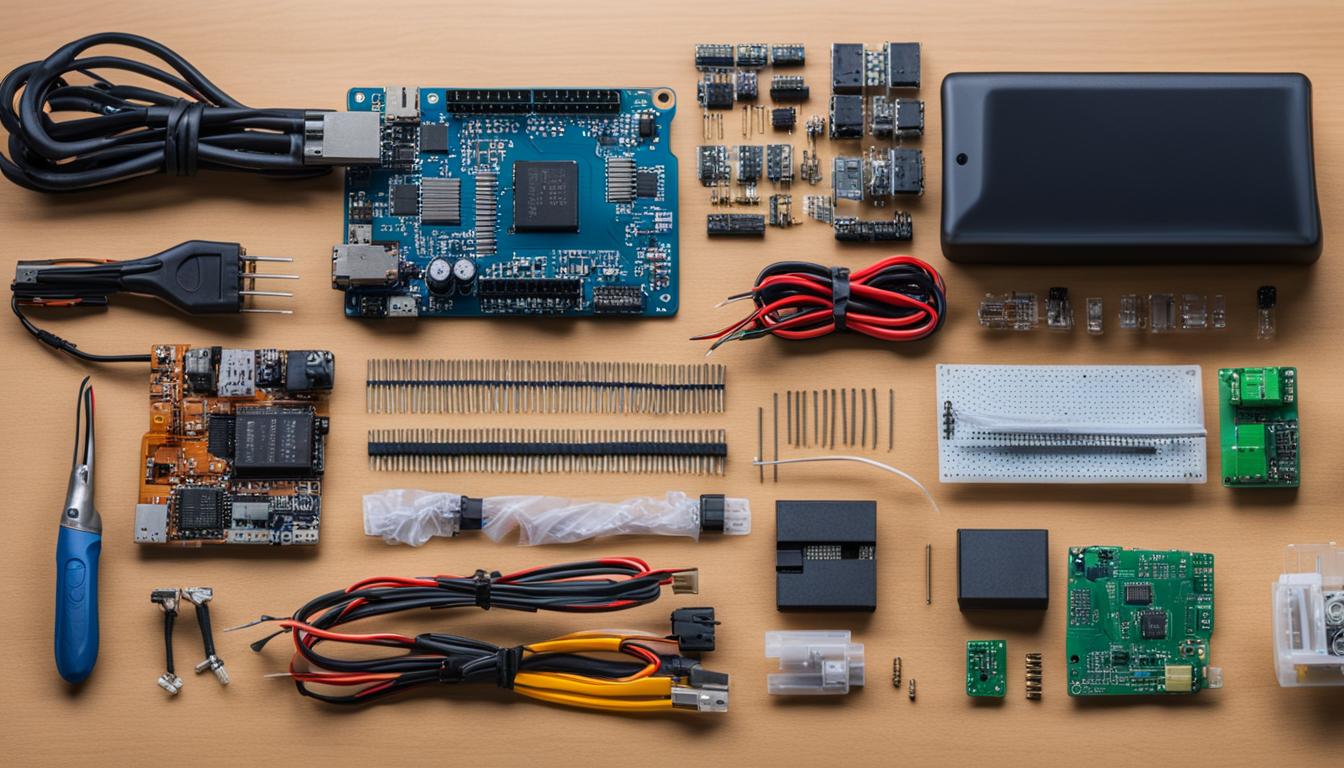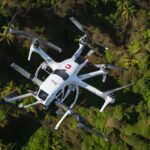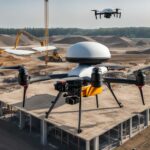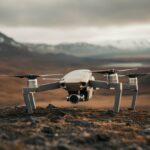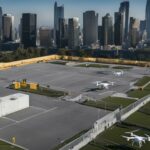Building your own drone can be a fun and affordable way to enter the world of drone flying. Rather than spending hundreds of dollars on a ready-to-fly drone, you can build your own kit for as little as $99. There are various cheap DIY drone kits available, ranging in complexity and price. In this guide, we will explore the best cheap DIY drone kits that offer the perfect balance of cost and functionality, allowing you to enjoy the thrill of flying your own drone without breaking the bank.
Key Takeaways: Cheap DIY Drone Kit
- Building your own drone is a fun and affordable alternative to buying a pre-built drone.
- DIY drone kits offer a range of options in terms of complexity and price.
- By building your own drone, you have the opportunity to learn about drone technology and customize your drone to your specific needs.
- Choosing the right frame, motors, propellers, and flight controller is crucial for the performance and stability of your DIY drone.
- There are several recommended DIY drone kits available that offer a balance of affordability and functionality.
Why Build Your Own Drone?
Building your own drone offers several advantages over buying a pre-built one. Firstly, it is a great learning experience that allows you to understand how drones work and gives you the ability to customize and modify your drone to your specific requirements. Additionally, building your own drone can be more cost-effective, especially if you are on a budget. It also gives you a sense of pride and accomplishment to fly a drone that you have built with your own hands. Whether you are interested in FPV racing, or aerial photography, or just want to have fun, building your own drone gives you the flexibility to create a customized drone that suits your needs.
Customization and Learning
When you build your own drone, you have the freedom to choose the components that best fit your needs and preferences. From the frame to the motors and flight controller, every aspect of the drone can be customized to create a drone that suits your specific goals. This level of customization allows you to optimize the performance, functionality, and even the appearance of your drone. Additionally, building your own drone provides a valuable learning experience. You will gain a deeper understanding of the technology behind drones and develop skills in electronics, soldering, and programming. This knowledge can be useful for future projects and can even lead to a career in drone technology or robotics.
Cost-Effectiveness
Building your own drone can be more cost-effective compared to buying a pre-built one, especially if you are on a tight budget. Ready-to-fly drones can often come with a hefty price tag, while DIY drone kits offer a more affordable option. By purchasing individual components and assembling them yourself, you can save money without compromising on quality. You can choose cost-effective components that still deliver excellent performance and functionality. Additionally, building your own drone allows you to upgrade or replace specific parts as needed, making it a more cost-effective long-term investment.
Pride and Accomplishment
There is a sense of satisfaction and pride that comes with successfully building and flying your own drone. It is a tangible representation of your skills and creativity. As you take your drone to the skies and witness its smooth flight and responsive controls, you will feel a sense of accomplishment. Building your own drone allows you to become part of a community of drone enthusiasts who share the same passion and interest. You can join online forums, attend meetups, and connect with like-minded individuals who can provide guidance and support. Building a DIY drone is not just a hobby; it is an experience that fosters personal growth and creates lasting memories.

Choosing the Right Frame
When building your own DIY drone, one of the most important considerations is choosing the right frame. The frame serves as the structural backbone of the drone and plays a crucial role in its performance and durability. There are various options to consider when selecting a frame, including the type of drone (quadcopter, tricopter, hexacopter, or octocopter) and the material of the frame.
Frame Types: Quadcopters are the most common and beginner-friendly type of drone, offering simplicity and lower costs. Tricopters have three arms, providing more stability and versatility. Hexacopters and octocopters have six and eight arms, respectively, offering increased payload capacity and redundancy for professional applications.
| Frame Type | Pros | Cons |
|---|---|---|
| Quadcopter | Easier to build and fly Lower cost Good for beginners |
Limited payload capacity |
| Tricopter | More stable Increased maneuverability |
Slightly more complex to build |
| Hexacopter | Higher payload capacity Improved redundancy |
More expensive Increased complexity |
| Octocopter | Highest payload capacity Maximum redundancy |
Most expensive Most complex to build |
Frame Materials: Frames are available in various materials, each with its own advantages and disadvantages. Carbon fiber frames are lightweight and durable, making them a popular choice among drone enthusiasts, but they tend to be more expensive. Wood frames are the cheapest option but may not be suitable for long-term use due to their susceptibility to moisture. Plastic frames offer a good balance of durability and affordability, while aluminum frames are lightweight but less durable than carbon fiber.
When choosing the right frame for your DIY drone, it’s important to consider your budget, the type of drone you want to build, and the intended use of your drone. A well-built and properly chosen frame will ensure the stability, performance, and longevity of your DIY drone.
Selecting the Motors and Propellers
Choosing the right motors and propellers is crucial for the performance and stability of your DIY drone. When it comes to motors, you have two options: brushed and brushless motors. Brushed motors are generally cheaper, but they wear out faster and require frequent replacements. On the other hand, brushless motors offer better performance and durability, although they tend to be more expensive.
When selecting motors, consider the motor KV rating. The KV rating indicates the motor’s RPM per volt. Lower KV-rated motors are suitable for stable flights, making them a good choice for beginners. Higher KV-rated motors, on the other hand, provide more power and agility, making them ideal for racing and advanced maneuvers.
When it comes to propellers, there are various sizes and materials to choose from. Carbon fiber propellers are known for their performance, while plastic propellers are more affordable. Longer blades offer stability, while smaller diameter propellers provide better maneuverability. It’s important to choose motors and propellers that are compatible with your frame and meet your specific requirements.
| Motor Type | Pros | Cons |
|---|---|---|
| Brushed Motors | Lower cost | Shorter lifespan |
| Brushless Motors | Better performance, durability | Higher cost |
When it comes to propellers, material and size are key factors to consider:
- Carbon fiber propellers offer better performance but are more expensive.
- Plastic propellers are affordable and widely used.
- Longer blades provide stability, while smaller diameter propellers offer better maneuverability.
Consider your budget, desired performance, and flight style when selecting motors and propellers for your DIY drone kit.
Choosing the Right Flight Controller
When it comes to building your own DIY drone, choosing the right flight controller is essential. The flight controller is like the brain of your drone, responsible for controlling its flight and stability. It is important to select a flight controller that suits your needs and offers the features you require.
One key feature to consider is the presence of GPS capabilities. A flight controller with GPS allows for advanced features such as return-to-home and waypoint navigation, which can greatly enhance your flying experience. Additionally, the presence of a barometer is important for detecting atmospheric pressure and determining the drone’s altitude. This feature is particularly useful if you plan on flying your drone in different weather conditions or at varying altitudes.
Other important sensors to look for in a flight controller include the gyroscope and accelerometer. The gyroscope measures the drone’s orientation and angle, helping to stabilize it during flight. The accelerometer detects acceleration and aids in maintaining stability. These sensors are crucial for smooth and controlled flights, especially if you plan on performing advanced maneuvers or flying in FPV mode.
“Choosing the right flight controller for your DIY drone build is crucial for its performance and functionality. A flight controller with GPS, barometer, gyroscope, and accelerometer will provide you with the necessary features for a smooth and stable flight. Take your time to research and compare different options to find the flight controller that best suits your needs.”
When selecting a flight controller, it is important to consider compatibility with other components of your drone, such as the frame and motors. Ensure that the flight controller you choose is compatible with the specific configuration of your DIY drone kit. Additionally, make sure to check the documentation and support available for the flight controller, as this can be helpful if you encounter any issues during the build or operation of your drone.
| Feature | Function |
|---|---|
| GPS Sensor | Provides location information, enables return-to-home and waypoint navigation |
| Barometer | Detects atmospheric pressure, aids in determining altitude |
| Gyroscope | Measures orientation and angle for stabilizing the drone during flight |
| Accelerometer | Detects acceleration, helps in maintaining stability |
Choosing the right flight controller is a crucial step in building your DIY drone. Consider the specific features and functions that are important to you and ensure compatibility with other components. Research different options and compare their specifications to find the flight controller that best meets your needs. With a carefully selected flight controller, you can enjoy a smooth and stable flight experience with your DIY drone.
Essential Drone Kit Components
Building your own DIY drone requires assembling various components to create a fully functional aerial vehicle. Let’s take a closer look at the essential drone kit components that will bring your DIY drone to life:
1. Frame
The frame serves as the foundation of your drone, providing structural support and housing for all the other components. Frames come in different materials such as carbon fiber, wood, plastic, and aluminum. Choose a frame that suits your needs in terms of strength, weight, and durability.
2. Electronic Speed Controllers (ESCs)
ESCs control the speed and direction of the motors, converting the signals from the flight controller into the appropriate power levels. Make sure to select ESCs that are compatible with your chosen motors and flight controller.
3. Motors
Drone motors provide the necessary thrust to lift and maneuver the aircraft. There are various types and sizes of motors available, including brushed and brushless motors. Consider factors such as power, efficiency, and compatibility when choosing the right motors for your DIY drone.
4. Power Distribution Board (PDB)
The PDB is responsible for distributing power from the battery to all the components of your drone, ensuring that each part receives the necessary voltage. It simplifies the wiring process and helps prevent power-related issues.
5. Video Transmitter (VTX)
A video transmitter allows you to transmit the live feed from your drone’s onboard camera to your ground station or FPV goggles. It enables you to see the world from your drone’s perspective in real time, enhancing your flying experience.
6. Flight Controller
The flight controller is the brain of your drone, processing sensor data and providing stabilization and control. It receives input from the receiver, gyroscopes, accelerometers, and other sensors, allowing you to control your drone’s flight behavior.
7. FPV Camera
An FPV (First Person View) camera captures real-time video footage, giving you a pilot’s-eye-view as you fly your DIY drone. Choose a camera with the desired resolution, field of view, and low-light performance for the best FPV experience.
8. Propellers
Propellers generate the thrust necessary for your drone’s flight. They come in different sizes and materials, each offering unique characteristics in terms of efficiency, noise level, and maneuverability. Choose propellers that are compatible with your motors and frame size.
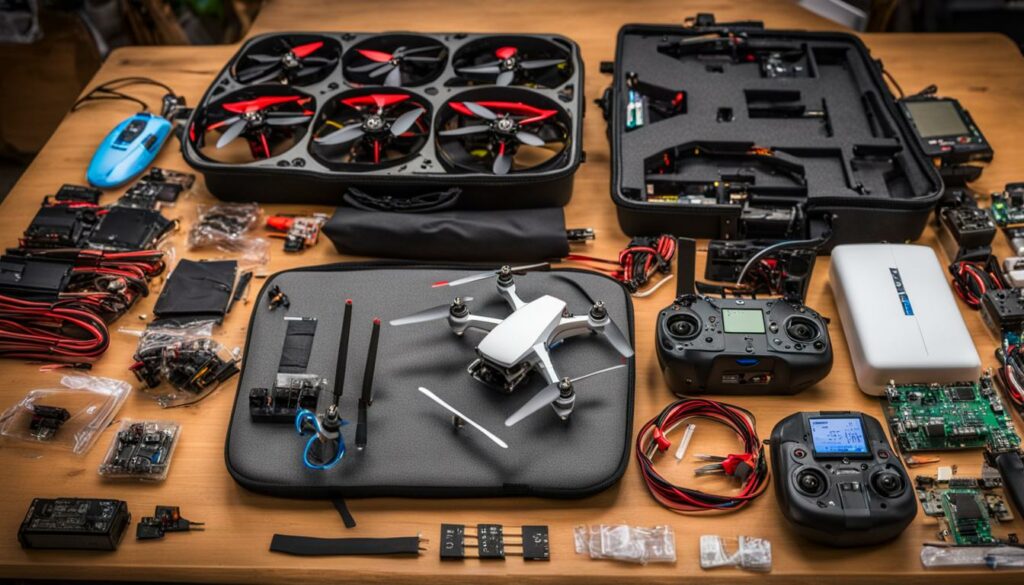
Summary
Building your own DIY drone involves selecting the right components that work harmoniously together. The essential components include the frame, ESCs, motors, PDB, VTX, flight controller, FPV camera, and propellers. Each component plays a crucial role in the performance and functionality of your drone. Consider compatibility, quality, and your specific requirements when choosing these components to ensure a successful and satisfying build.
| Component | Description |
|---|---|
| Frame | Provides structural support and housing for all components |
| Electronic Speed Controllers (ESCs) | Control motor speed and direction |
| Motor | Generates thrust for flight |
| Power Distribution Board (PDB) | Distributes power to all components |
| Video Transmitter (VTX) | Transmits live video feed to ground station or FPV goggles |
| Flight Controller | Controls drone’s flight behavior and stabilization |
| FPV Camera | Captures real-time video footage for first-person view |
| Propellers | Generate thrust for flight |
Recommended DIY Drone Kits
When it comes to building your own DIY drone, there are several highly recommended kits available that offer a perfect balance of affordability and functionality. These kits provide everything you need to assemble your drone, including the necessary components and detailed instructions.
Raspberry Pi Drone Kit
| Kit Components | Description |
|---|---|
| Raspberry Pi 4B | The latest Raspberry Pi model with powerful processing capabilities |
| Pixhawk Flight Controller | A reliable flight controller for precise control and stability |
| Drone Frame | A sturdy frame to hold all the components together |
| Brushless Motors | High-performance motors for efficient flight |
| ESCs | Electronic speed controllers to control motor speed |
| RC Transmitter and Receiver | For wireless control of the drone |
The Raspberry Pi Drone Kit is a comprehensive option that offers advanced capabilities and customization options.
Pi Zero Micro Drone Kit
If you’re looking for a smaller and more affordable option, the Pi Zero Micro Drone Kit is a great choice. It is perfect for beginners or those who want to learn coding as it utilizes the Raspberry Pi Zero microcontroller. Despite its small size, this kit offers impressive performance and functionality.
DJI Tello EDU Kit
The DJI Tello EDU Kit is a user-friendly option that is suitable for beginners and educational purposes. It allows for programming and customization, providing a hands-on learning experience for drone enthusiasts.
Joshua Bardwell FPV Kit
For those interested in FPV racing, the Joshua Bardwell FPV Kit is highly recommended. This kit includes all the necessary components for an immersive and thrilling FPV racing experience. It also comes with detailed instructions and support, making it ideal for beginners in the FPV world.
QWinOut 330mm Kit
DJI F550 Wheel Arf Kit
QWinOut Q705 Kit
These kits are perfect for those who want to build larger and more versatile drones. The QWinOut 330mm Kit and DJI F550 Wheel Arf Kit offer rugged frames and advanced features for a variety of applications. The QWinOut Q705 Kit is designed for professional use, such as aerial surveying and remote sensing.
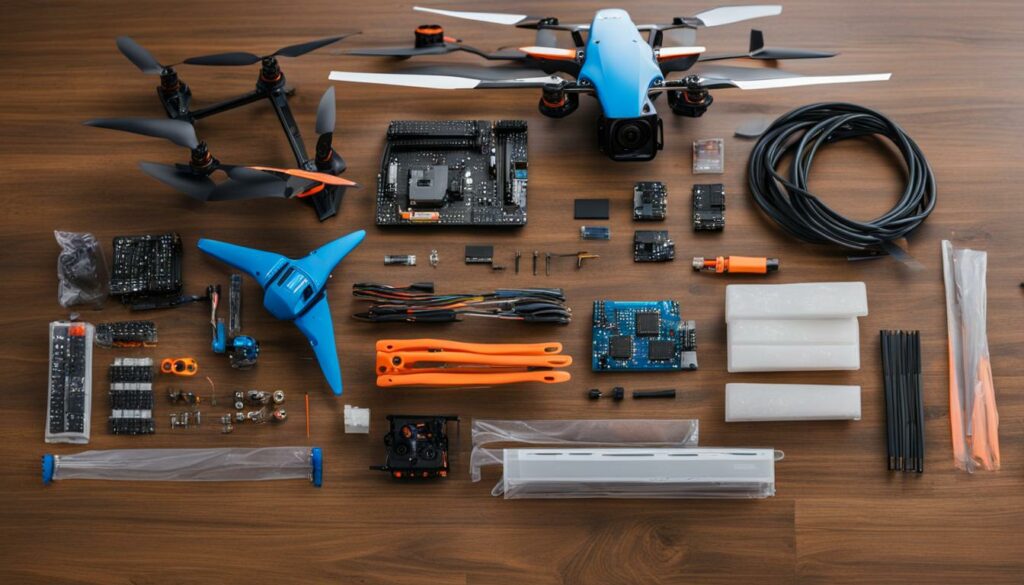
Choose a DIY drone kit that aligns with your interests and budget. With the right kit, you can build a high-quality drone that suits your needs and allows you to explore the exciting world of drone flying.
Building Your DIY Drone
Building your own DIY drone can be an exciting and rewarding experience. With the right DIY drone kit and some patience, you can create a fully functional drone that suits your needs and preferences. To ensure a successful build, follow the step-by-step instructions provided with your kit. These instructions will guide you through the assembly process, from connecting the frame to attaching the motors and flight controller. Make sure to double-check all connections and wiring to ensure everything is securely in place.
Having the right assembly tools is essential for a smooth build. Common tools needed include screwdrivers, pliers, wire cutters, and heat shrink tubing. These tools will help you assemble the different components and make any necessary adjustments. Additionally, having a clean and organized workspace will make the assembly process much easier. Dedicate a space where you can lay out all the parts and have enough room to work comfortably.
Once your drone is assembled, you have the opportunity to customize it further. You can add additional features such as LED lights, GPS modules, or even a gimbal for aerial photography. Customization allows you to tailor your drone to your specific needs and interests. However, it’s important to note that modifications may require additional knowledge or skills. Take the time to research and understand how different components interact and integrate with your drone before making any modifications.
| Assembly Tools | Customization Options |
|---|---|
|
|
Building and customizing your DIY drone is a fun and educational process. It allows you to gain a deeper understanding of drone technology and provides a sense of accomplishment when you see your creation take flight. Remember to always fly responsibly and follow local regulations to ensure a safe and enjoyable experience.
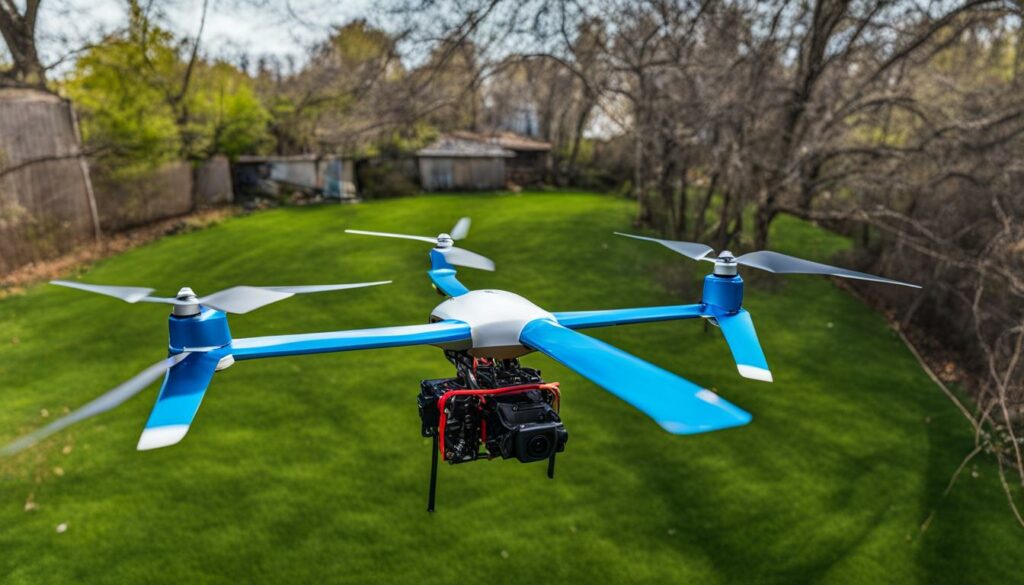
Flying Your DIY Drone
Once you’ve successfully built your DIY drone, it’s time to take it to the skies and experience the thrill of flight. However, before you embark on your first drone flight, it’s important to familiarize yourself with some essential safety precautions to ensure a safe and enjoyable experience.
Safety Precautions
When flying your DIY drone, always prioritize safety. Here are some key safety tips to keep in mind:
- Choose a suitable flying location away from people, buildings, and other obstacles.
- Check and follow local regulations and laws regarding drone flight.
- Ensure your drone is properly calibrated and fully functional before each flight.
- Keep a safe distance from people and property to prevent accidents.
- Keep an eye on battery life and avoid flying until the battery is depleted.
- Do not fly your drone in adverse weather conditions, such as strong winds or heavy rain.
- Always maintain visual contact with your drone during flight.
By following these safety precautions, you can minimize the risk of accidents and ensure a safe flying experience for yourself and others.
Beginner Tips
If you’re new to flying drones, here are some helpful tips to get you started:
- Practice basic maneuvers such as hovering, forward flight, and turns in an open area to get familiar with the controls.
- Start with slow and gentle movements, gradually increasing speed and complexity as you gain confidence.
- Pay attention to the orientation of your drone, as it may appear different from your perspective when flying in first-person view (FPV).
- Utilize the beginner mode or stabilization features on your flight controller to enhance stability and make flying easier.
- Consider joining a local drone community or online forum to connect with experienced pilots who can provide guidance and support.
With practice and patience, you’ll soon become a skilled drone pilot, capable of capturing stunning aerial footage and enjoying the exhilaration of flying.
Troubleshooting
Despite your best efforts, you may encounter some issues or difficulties during your drone flights. Here are some troubleshooting tips to help you overcome common obstacles:
“My drone is not responding to the controller.”
Check the connection between the controller and the drone. Ensure that both are properly paired and that the controller’s batteries are fully charged. If the issue persists, refer to the troubleshooting guide provided with your DIY drone kit or seek assistance from online communities and forums.
“My drone is drifting or unstable during flight.”
Check the calibration of your drone’s sensors and perform an accelerometer and gyro calibration if necessary. Also, make sure your propellers are properly balanced and securely attached. If the problem continues, consult the user manual or seek advice from experienced drone pilots.
Remember, troubleshooting is an essential part of the learning process, and with a little perseverance, you’ll be able to resolve any issues and continue enjoying your DIY drone.
Now that you have a good understanding of drone flight safety, beginner tips, and troubleshooting, you’re ready to take to the skies and explore the incredible possibilities of your DIY drone!
My Personal Opinion About Cheap DIY Drone Kits
As a fervent fan of both DIY endeavors and technological advances, I hold the opinion that Economical Do-It-Yourself Drone Sets is an extraordinary development. These kits act as an easily obtainable and reasonably priced gateway into drone technology for novices and enthusiasts alike. They grant first-hand experience which enables individuals to grasp intricate details about how drones work – knowledge not available with off-the-shelf pre-built models. Furthermore, the financial appeal these sets bring positions them as appealing substitutes for steeply-priced market-ready drones.
Crafting and piloting remotely operated devices from economical build-it-yourself packages has greatly enriched my hands-on understanding. Constructing a remotely controlled device from the ground up unravels the complex puzzles surrounding drone technology, fostering problem-solving prowess when tackling obstacles that could potentially crop up during the building stage. Above all, nothing can quite match the gratification stemming from successfully putting together and then maneuverably flying your personally assembled aircraft.
While it’s crucial to acknowledge that inexpensive DIY drone kits could pose certain difficulties, the standard of elements within these packages may be poor and this might impact the performance as well as longevity of your device. The absence of guided customer assistance and comprehensive assembly guidelines can particularly put first-timers at a disadvantage. Despite these plausible negatives, I stand by my assertion that cost-effective homemade drone kits deliver an enriching learning journey capable of kindling enduring fascination with drone tech plus automation.
Conclusion
In conclusion, building your own DIY drone can be a cost-effective and fulfilling endeavor. With a cheap DIY drone kit, you can construct a fully functional drone that suits your budget and needs. Whether you’re an FPV enthusiast, an aspiring aerial photographer, or simply seeking a fun and educational hobby, building your own drone offers endless possibilities.
By following the step-by-step instructions and utilizing the provided assembly tools, you can assemble your DIY drone with ease. Once built, feel free to customize your drone further by adding features like LED lights, GPS modules, or even a gimbal for aerial photography.
As you take your DIY drone for its first flight, remember to prioritize safety and adhere to local regulations. Start in a beginner-friendly location, practice basic maneuvers, and gradually build your piloting skills. Should you encounter any issues, consult the troubleshooting guide or seek assistance from online communities and forums.
Embark on the exciting journey of building and flying your own DIY drone. Not only will you have a drone that is tailored to your preferences, but you’ll also gain a deeper understanding of drone technology. So, get started on your DIY drone project and enjoy the freedom of flying your own creation!
FAQ
What is a DIY drone kit?
A DIY drone kit is a package that includes all the necessary components and instructions for building your own drone. It typically includes the frame, motors, propellers, flight controller, and other essential parts.
Why should I build my own drone?
Building your own drone allows you to understand how drones work, customize your drone to your specific needs, and can be more cost-effective compared to buying a pre-built drone.
What is the purpose of the frame in a DIY drone?
The frame provides structural support to the drone and plays a crucial role in its performance and durability.
What types of frames are available for DIY drones?
DIY drone frames come in various materials, including carbon fiber, wood, plastic, and aluminum. Each material has its own advantages and considerations in terms of weight, durability, and cost.
What are brushed and brushless motors?
Brushed motors are generally cheaper but wear out faster, while brushless motors are more durable and offer better performance. The choice depends on your budget and desired performance.
What is the KV rating of a motor?
The KV rating indicates the motor’s RPM per volt. Lower KV-rated motors are suitable for stable flights, while higher KV-rated motors provide more power and agility.
What is a flight controller?
The flight controller is the brain of your DIY drone and controls its flight and stability. It includes sensors such as GPS, barometer, gyroscope, and accelerometer.
What components are included in a DIY drone kit?
A DIY drone kit typically includes the frame, electronic speed controllers (ESCs), motors, power distribution board (PDB), video transmitter (VTX), flight controller, FPV camera, and propellers.
What are some recommended DIY drone kits?
Some highly recommended DIY drone kits include the Raspberry Pi Drone Kit, Pi Zero Micro Drone Kit, DJI Tello EDU Kit, Joshua Bardwell FPV Kit, QWinOut 330mm Kit, DJI F550 Wheel Arf Kit, and QWinOut Q705 Kit.
How do I build my DIY drone?
Building your DIY drone requires careful assembly and following the provided instructions or video tutorials. Make sure to have all the necessary tools and components, double-check connections, and take your time.
What should I consider when flying my DIY drone?
Before flying, familiarize yourself with safety precautions and regulations in your area. Start in a beginner-friendly location, practice basic maneuvers, and refer to troubleshooting guides or seek assistance if needed.


